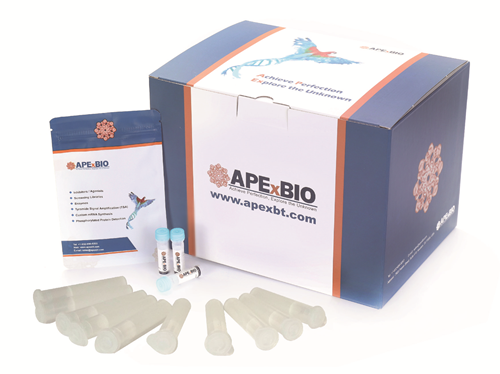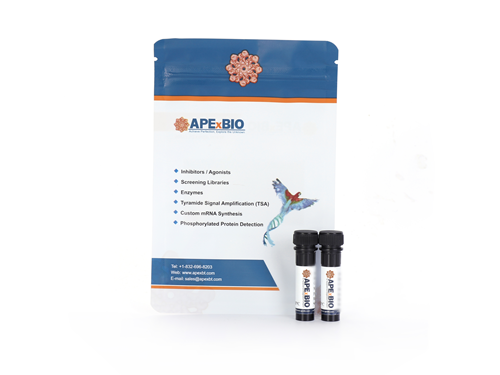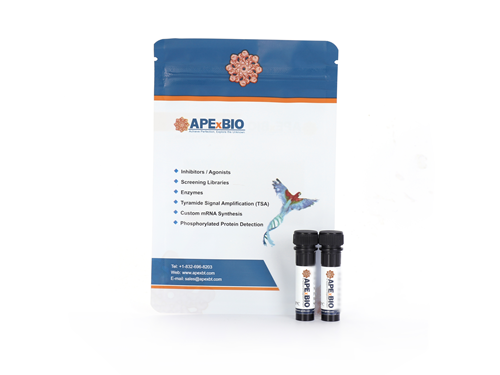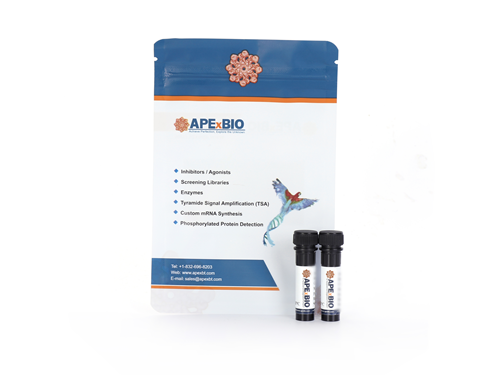NHS-LC-Biotin Kit
| Sufficient For: 10 labeling reactions, each with 1 to 10 mg of antibody | |||
| Streptavidin | 10 mg | NHS-LC-Biotin | 25 mg |
| HABA Solution | 1 mL | PBS Pack (makes 1 L) | 1 pack |
| Sephadex G-25 in PD-10 Desalting Columns | 8.3 mL, 10 columns | ||
| Store biotin and streptavidin reagents at -20°C. Store remaining kit components at 4°C. | |||
| Label or Dye: | Biotin | Product Size: | 10 reactions |
| Labeling Scale: | 1-10 mg | Labeling Target: | Proteins (General), Antibodies (General) |
• Amine-reaction—Reacting with primary amines (-NH2), such as lysine side-chains, or the amino-termini of polypeptides.
• Labeling antibody—This kit can label antibodies to facilitate immobilization, purification or detection.
• Labeling protein—This kit can label proteins to facilitate immobilization, purification or detection.
• Labeling Cell surface molecule—This kit can label the cell surface proteins because the negatively charged reagent does not permeate cell membranes.
• Irreversible—Permanent amide bonds are formed; Spacer arm cannot be cleaved.
• Excellent balance—Spacer arm (total length added to target) is 22.4 angstroms; provides excellent balance between adequate length (minimal steric hindrance for biotin binding) and modest mass.
• Solubility increased—Sulfo-NHS group increases reagent water solubility compared to ordinary NHS-ester compounds.
NHS-LC-biotin (succinimidyl-6-(biotinamindo)hexanoate), also known as NHS-X-biotin is a derivative of D-biotin, a amine-reactive biotinylation agent, that contains a spacer arm off the valeric acid side chain of D-biotin with an NHS ester group at its end. The NHS ester group at the end of NHS-LC-biotin covalently binds to amine groups in proteins and other molecules forming a stable amide linkage and releasing the NHS group. The 6-aminocaproic acid spacer of NHS-LC-biotin greatly increases the length between a covalently modified molecule and the bicyclic biotin rings leading to a better binding potential for avidin or streptavidin probes. NHS-LC-biotin is insoluble in aqueous environments requiring the dissolution of organic solvents prior to the addition to a buffered reaction.












